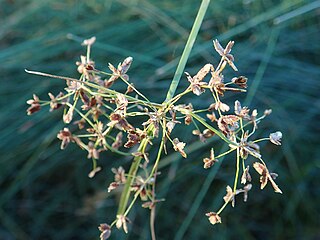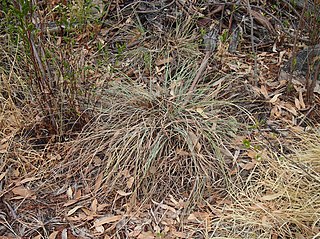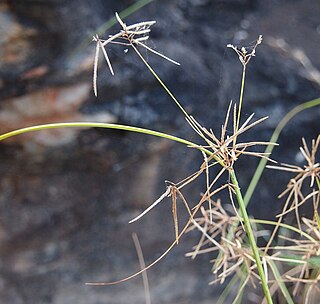
Cyperus polystachyos, also known as Pycreus polystachyos, and also called manyspike flatsedge in the USA, or bunchy sedge, coast flatsedge, many-spiked sedge or Texas sedge in Australia, is a herbaceous species in the family Cyperaceae, widespread in tropical and subtropical areas around the world, sometimes extending its range into temperate regions.

Cyperus betchei is a sedge of the family Cyperaceae that is native to Australia.
Cyperus centralis is a sedge of the family Cyperaceae that is native to arid areas of central Australia.

Cyperus compressus, commonly known as annual sedge, is a sedge of the family Cyperaceae that has a wide distribution throughout countries with warmer climates. It is found in tropical areas of Africa, Asia and the Americas.

Cyperus concinnus is a sedge of the family Cyperaceae that is native to Australia, and found in New South Wales, Queensland, the Northern Territory, South Australia, Victoria and Western Australia.

Cyperus conicus is a sedge of the family Cyperaceae that is native to Western Australia.
Cyperus crispulus is a sedge of the family Cyperaceae that is native to Australia and found in Western Australia, and the Northern Territory.

Cyperus dactylotes is a sedge of the family Cyperaceae that is native to Australia.

Cyperus gilesii, commonly known as Giles' flat-sedge, is a sedge of the Cyperaceae that is native to Australia.
Cyperus gymnocaulos, commonly known as spiny flatsedge, is a sedge of the family Cyperaceae that is native to Australia.

Cyperus javanicus, also known as the Javanese flatsedge, is a sedge of the family Cyperaceae that is native to Indonesia and Australia.
Cyperus latzii is a sedge of the family Cyperaceae that is native to Australia, and found in the Northern Territory and Western Australia.
Cyperus nutans is a sedge of the family Cyperaceae that is native to Australia, China, India, Bangladesh, south-east Asia, Malaysia, India, and Indonesia.
Cyperus orgadophilus is a sedge of the family Cyperaceae that is native to Australia, in Western Australia, the Northern Territory, and Queensland.
Cyperus portae-tartari is a sedge of the family Cyperaceae that is native to Australia, and found in the Northern Territory and Western Australia.
Cyperus pulchellus is a sedge of the family Cyperaceae that is native to northern Australia, tropical Africa, northwest Madagascar and Southeast Asia.

Cyperus pygmaeus, also known as dwarf flat sedge, is a sedge of the family Cyperaceae that is native to Australia.

Cyperus vaginatus, commonly known as stiff-leaf sedge or stiff flat-sedge, is a sedge of the family Cyperaceae that is native to Australia.
Cyperus viscidulus is a sedge of the family Cyperaceae that is native to north western Australia.
Cyperus zollingeri, commonly known as roadside flatsedge, is a sedge of the family Cyperaceae that is native to tropical areas of Australia, Africa and Asia.









